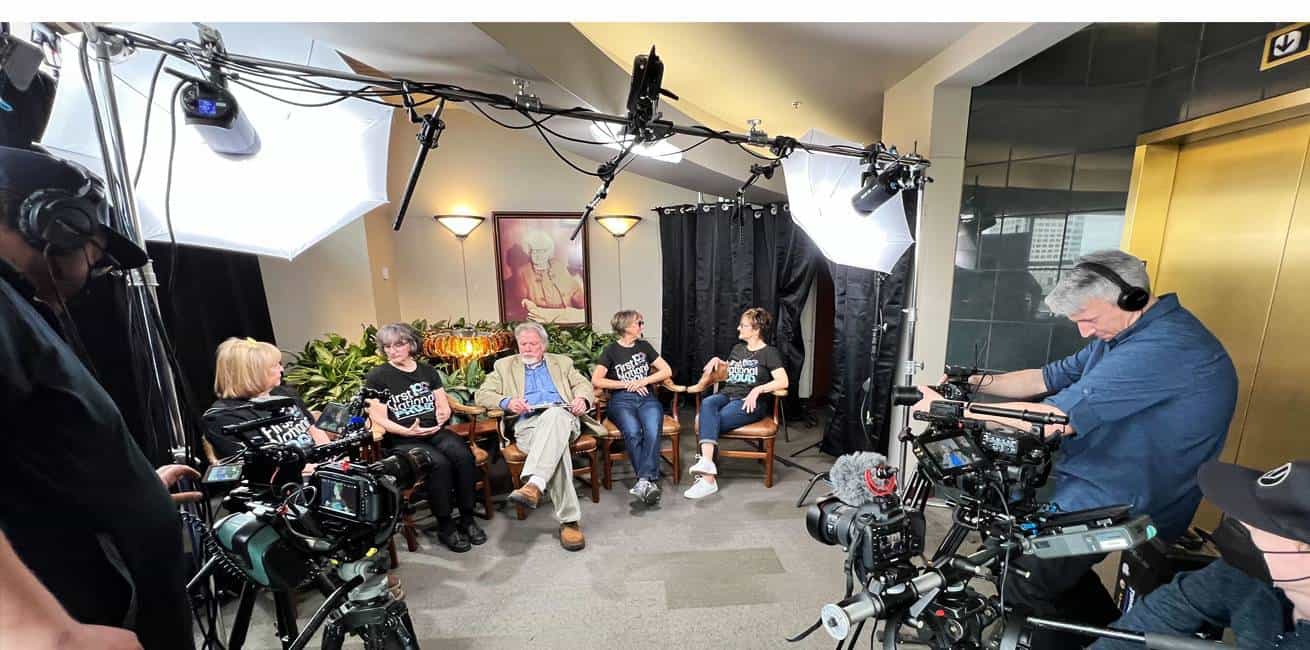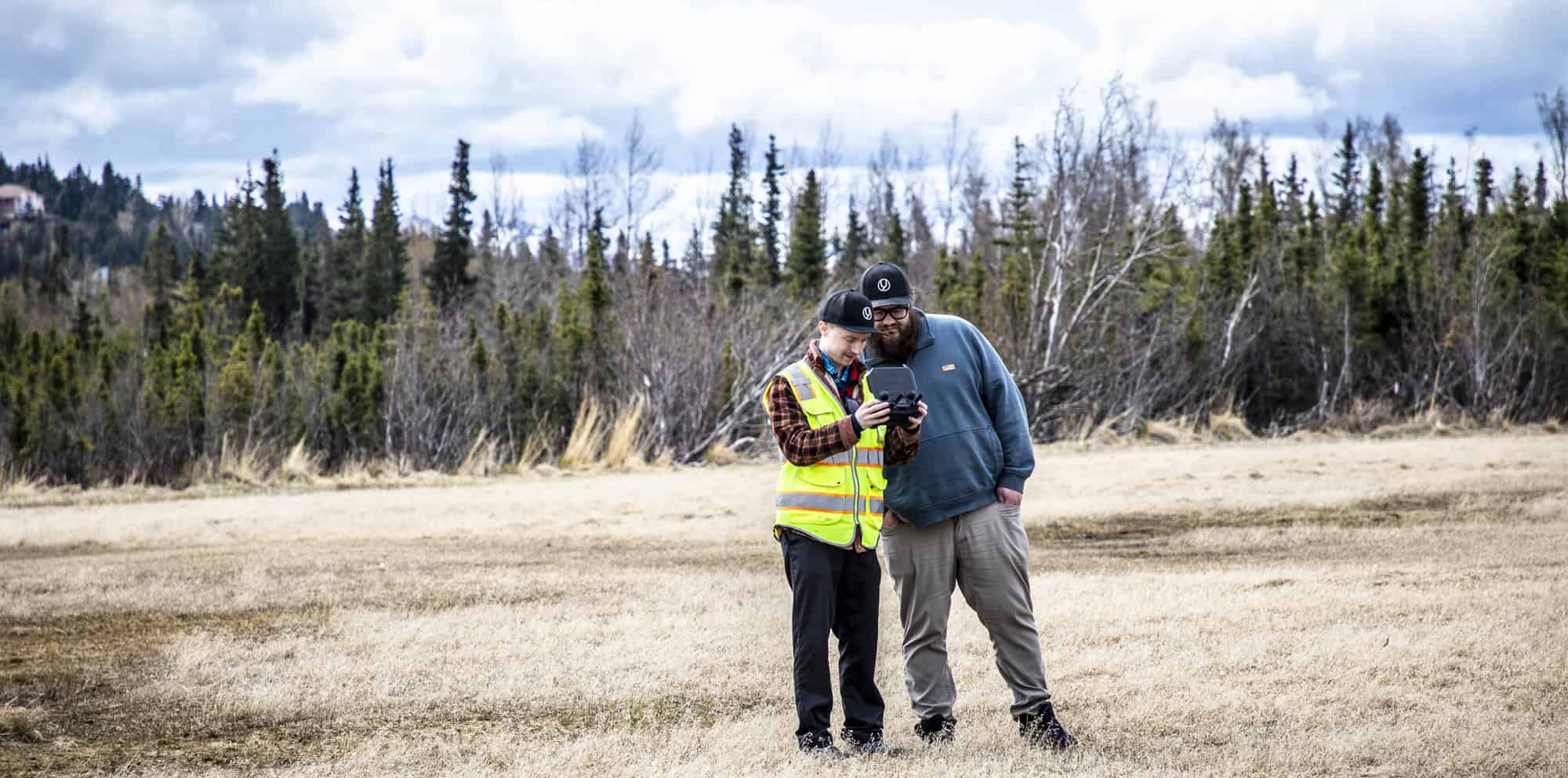
Staying on Budget
TV is still the king of advertising, even in this modern era of mobile devices and new media. One of the reasons for that is a TV commercial can straddle both worlds of traditional and new media, being re-purposed in multiple ways across websites, YouTube and social media to reach more people and have a longer life. So, if you’re ready to put your business on prime time and create a tidal wave of new customers rushing in your door, you’ll need a budget for your video.
This week, we interview Yuit’s own Michael Stewart, one of Alaska’s most accomplished cinematographer/editors. Mike tells us that, even if you’re on a shoestring budget, there is one secret you can use to make any video project great. (But you’ll have to read this entire blog post to find out what it is. No skipping ahead!) So, how much is it going to cost?
There are two ways to budget for a video shoot: Plan and Price.
Plan Your Project
The Plan approach to a project is when you have a specific creative vision in mind and cost is a secondary concern. (The “Price” method, as you may have guessed, is the opposite.) Mike is the person who makes your vision a reality, so he looks at practical elements of your idea in the same way a builder would look at your blueprint for a dream home and ask, “Okay, how many bricks will I need to do that?”
The first thing I do is ask is for a kick-off meeting with our account manager and maybe the client, too, to get basic, nuts-and-bolts information: What is the goal of this video? What is the client hoping to accomplish? How long is the video? Is it a 30-second TV commercial or a 30-minute video for YouTube or a website or presentation to a large audience, for example, at a fundraiser? Because length is going to affect a lot of costs. Just for one example, paying an actor to act on screen or read a voiceover: Is she in my studio for just a few minutes? Or are we paying her for several days?
Understanding the Scope
I ask what the scope of the video is. Are we shooting cargo ships at sea from a helicopter? Or do we have one person speaking to the camera?
Once we get the basic concept down, I start asking crew and equipment questions. How big is the room or set? Is it outdoors or indoors? Is weather going to be a factor? How many people on screen? How many microphones will I need? How many cameras? How many grips, electricians, etc.
We have to sit down as a team and essentially walk through the entire process in our minds, thinking about every little thing we’ll need, every little thing that will cost money, every little thing that could change and how we would adapt to changes.
Our account manager will ask support questions, like how are these people getting back and forth to set every day? Where will they park? We need to feed them throughout the day. How much food and snacks will we need? What about permits and other regulatory requirements? Are we shooting in an industrial area? What safety requirements or PPE will we all need?
Then, I ask – either myself or our team – about post-production. How much editing time will I need? This is mostly determined by the length of the video. What kind of music will we need? Do we have available footage already (what we call “B-roll”) that we can use? Would buying stock footage work, or do we need to shoot all footage ourselves?
We have to sit down as a team and essentially walk through the entire process in our minds, thinking about every little thing we’ll need, every little thing that will cost money, every little thing that could change and how we would adapt to changes.
Establishing the Goals
Part of the reason for asking these questions goes beyond simple “How can we make this happen?” to helping the client decide the best option for their desired outcome. For example, if it’s a fairly basic message, a longer video runs the risk of losing your audience. You want any work to be engaging all the way through and hold the audience’s attention. That way, it resonates with people long after it’s over. It’s memorable.
It’s critically important to keep asking the main question throughout the whole process: What is your goal?
In most cases, your goal is probably to increase your business or bring actionable awareness to a cause, so keep in mind that your video or television spot reflects on your company and results in people having an opinion about you and your ability to do what you do. We want to always set your business up for success by airing video that gives people confidence in your professionalism, competence, your ability to be the best at what you provide. A poorly made TV spot or video that is clearly low quality makes the audience wonder, “If they can’t even make a decent TV commercial, how good can they be at the big things? Can I trust them to take care of me as their customer? Can I trust the quality of their work?”
Crafting the Message
So, professionalism and high-quality public communications are always a priority. And yet, quality isn’t enough by itself: Your message has to be compelling. And that usually means being good, creative entertainment, not merely a vehicle for information. Think about the big companies and how entertaining their ads are. Nike, Budweiser, Ford. A TV commercial is either entertaining or it’s ignored. It’s very easy to change the channel or go to the kitchen for a snack.
You want people to watch your spot, so give them something they want to watch. It’s through the rare alchemy of quality mixed with entertainment that a video can transport people to a new understanding of an issue and a TV commercial can change minds or compel people to do something. The movie director Mira Nair has a great quote I like very much. She said, “Films, under the guise of entertainment, should open windows in your heart.”
And, that’s exactly what your video project needs to do – even if you think your goal is very simple, even just, “We’re having a sale on Friday.” You’re still trying to accomplish two things: one, give people confidence in your business and, two, inspire them to take action.
Price Your Video Shoot
If the Plan method is the “Just do it” approach, then Price is the “What can we do?” approach.
This is when a client has a set budget, and we need to figure out how to get their message across in clever ways that also position the company as professional, reliable, high quality. We see this often with nonprofits, who do great good in our community but don’t have the same advertising budget a for-profit corporation does. So, we get creative.
Let’s Get Creative
For one example, we recently shot a TV commercial here in our office in a way that made it look like a bank. The client did not have the resources to rent a bank as a shoot location, so we made a few changes to an office space, projected a logo on a blank wall, and you’d never know the actors aren’t in an actual bank. So, using our offices saved the client an expenditure.
With the Price approach to a video or TV spot, I start by asking the same essential question: What is your goal? Then, once I understand the client’s creative vision, I look for ways to make it happen and where we can be creative and where we need to limit the practicalities of shooting.
For example, can part of the spot be done through animation rather than human actors on location? Often, animation is more expensive than shooting human actors, but sometimes, it’s the reverse. Showing the entire funding process for helping low-income people get home loans, for example, could be an animated chart rather than a series of scenarios with real people in different locations.
Films, under the guise of entertainment, should open windows in your heart. − Mira Nair
Equipment and crew, obviously, are a major consideration with a restricted budget. I would look for ways to do as much myself and with our in-house resources as possible. If a business intends to shoot its own video or TV spot, there are a couple of aspects I strongly advise prioritizing.
Finding the Right Equipment
First, use a good camera. Please do not shoot something intended for professional marketing on a smartphone. Some phones now have outstanding camera capabilities, but it’s just not going to look the same. I advise using a DSLR camera, something with a noticeable depth of field, meaning a variable lens.
The one thing that’s always a giveaway of a poorly made video is sound quality. I absolutely recommend using an additional microphone, preferably one that can be placed close to the actor speaking, and a well-insulated room or space. Do sound tests before recording your actual video. Then make adjustments.
High-quality camera imagery combined with high-quality sound is a great place to start and, I would say, essential to a professional, confidence-inspiring product that reflects well on you and your business.
There is one secret ingredient anyone can use to make a great video or TV commercial at any budget level: writing.
Even the most beautiful, most expensive video in the world is going to be overlooked if people aren’t interested in what you’re saying. But if you have a powerful story, you can get people to pay attention to your message and feel compelled to do what you’re asking them to do with very little production. Just a person telling her story against a black backdrop can be enormously compelling. If it’s a good story. So, take the time to start with a great script.
We have a wonderful blog post here from Yuit’s vice president, Grant Johnston, on how to use storytelling elements in your communications. You can read it here.
If you’re thinking, “What story? I just need to tell people to shop at my business,” I think you’d be surprised how you can use storytelling basics to communicate a very simple topic in an interesting way. It’s good storytelling that makes something simple into something people want to watch.
Thank you, and I’ll see you on the airwaves. Give Yuit a call if you have questions or want to talk about how we can help you make professional-grade videos and TV spots that will help you stand out from the crowd.




